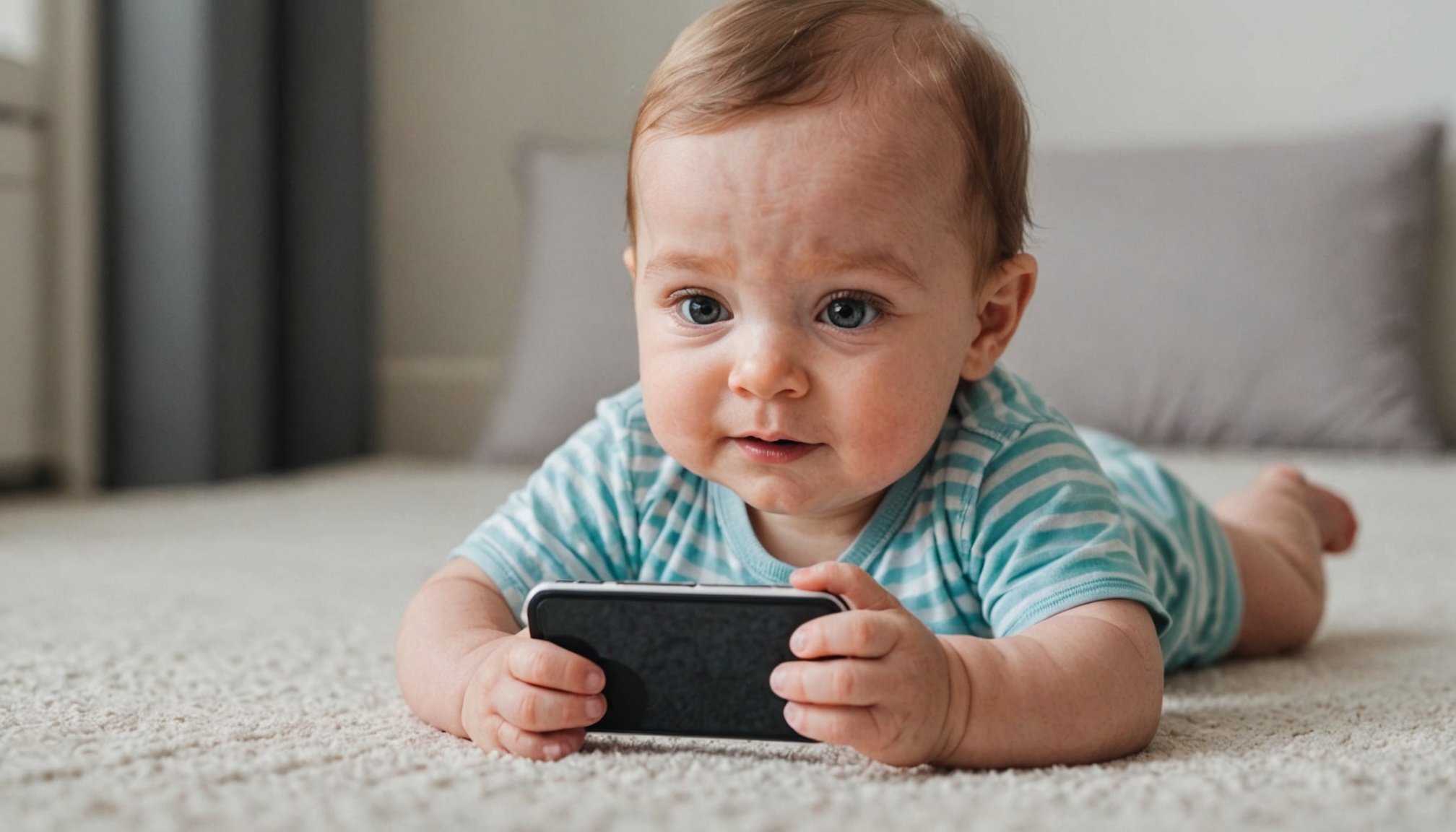Overview of Smartphone Features for Baby Monitoring
Smartphones have revolutionised the way parents monitor their little ones, thanks to a variety of smartphone baby monitoring features. One of the key advantages is the access to a plethora of baby monitoring apps. These apps transform your smartphone into an effective baby-monitoring tool, offering a range of functionalities right at your fingertips.
When selecting an app, it is crucial to choose one that aligns with your needs. Some essential features to consider include video streaming, sound alerts, and movement detection. By equipping your smartphone with the right app, you enhance its monitoring capabilities significantly.
Safety remains a priority for parents. Many apps come with robust parental controls, enabling you to set boundaries and modify settings to safeguard your child’s privacy. Effective parental control features allow for restrictions on who can access the monitoring data, reinforcing security.
Understanding the various capabilities and limitations of these apps ensures you make informed decisions. Not only do quality apps enhance monitoring, but they also provide peace of mind, knowing that your child’s environment is safe and secure. As smartphone technology continues to advance, the potential for improved and efficient baby monitoring grows exponentially.
Recommended Apps for Baby Monitoring
Navigating the myriad of best baby monitoring apps can be a daunting task. Ensuring that you select an app specifically tailored to your needs can significantly enhance monitoring capabilities. Several top-rated apps across various platforms offer unique functionalities. Some of the leading apps include Cloud Baby Monitor, Baby Monitor 3G, and Dormi. These apps offer a range of features like real-time video streaming and audio monitoring, which are crucial for a comprehensive monitoring experience.
When examining these apps, key features to prioritise include user-friendly interfaces, range stability, and multi-device support. These aspects make a substantial difference in your overall user experience. Another important consideration is the comparison between free vs. premium monitoring apps. While free apps might meet basic requirements, premium options often provide enhanced security features and more reliable performance, which may be worth the investment for added peace of mind.
It is important to weigh the costs against the benefits when making a decision. A well-selected app can transform your smartphone into an invaluable tool, ensuring you stay connected to your little one with confidence. Ads-free environments and additional storage options are often perks associated with premium versions, providing more tailored solutions.
Optimizing Camera Settings for Baby Monitoring
Ensuring that your smartphone provides clear and reliable visuals for monitoring requires attention to its camera settings. The smartphone camera settings you select directly impact the video quality of the baby monitoring apps you use. Begin by adjusting resolution settings to the highest available for sharp image quality. This adjustment maximises details you can monitor, crucial for your peace of mind.
Low-light environments can hinder video quality, so enabling night mode is essential. Night mode improves visibility in dim conditions without sacrificing image clarity. This is particularly beneficial during nighttime monitoring when lighting is minimal. Explore the night vision capabilities of your app as well, as some provide enhanced support for such settings.
Maintaining video quality involves more than just initial adjustments. Regularly clear your device’s camera lens to ensure unblemished recording, and assess the lighting in the baby’s room for consistent clarity. Excessive or fluctuating lighting can cause disturbances in the video feed.
In summary, properly fine-tuning your camera settings ensures that your smartphone operates as an effective monitoring device. It’s worth investing time in understanding these settings to make the most of what your smartphone offers, providing a clearer, safer monitoring experience.
Sound Monitoring Techniques
Smartphones offer a myriad of audio monitoring capabilities that enhance the baby monitoring experience. Configuring these features properly ensures you receive effective and timely sound alerts. To achieve this, understanding and adjusting the noise sensitivity settings is crucial. These settings allow your device to discern between normal ambient noise and significant sound changes, minimizing false alarms and ensuring only important alerts are triggered.
For optimal performance, explore different sound sensitivity settings to find what works best in your baby’s environment. Adjusting sensitivity according to room acoustics and expected noise levels can significantly enhance alert accuracy. This customization is particularly important for parents who might be distracted by unnecessary notifications.
In addition to setting sensitivity, it is advisable to conduct periodic checks on the audio quality captured by your smartphone. Regular tests help in verifying that sound clarity is maintained and all significant noises are detected promptly. This proactive approach assures continuous monitoring without disruptive misfires.
Leveraging your smartphone’s audio features transforms it into an efficient monitoring tool. By applying the right configurations, you prioritize both effective alert systems and your child’s safety, creating a soothing and secure atmosphere for everyone in the household.
Security Features for Safe Monitoring
Protecting your child’s data through robust smartphone security features is imperative for safe baby monitoring. As these monitoring apps collect sensitive information, securing it is paramount. Begin by scrutinising each app’s privacy settings to ensure information sharing is limited to authorised users only. This prevents unauthorized access to the live feed or stored recordings.
Data protection is another cornerstone of secure monitoring. Use apps that encrypt data during transmission and storage. Encryption transforms data into a coded form inaccessible to unauthorised users. Regular updates and strong passwords fortify the security framework, keeping your monitoring system resistant to breaches.
For reliable safety, adopt best practices when setting up app security features. Enable two-factor authentication where possible, adding an additional layer of defence against cyber intrusions. Be vigilant in monitoring access logs for any suspicious activity, ensuring your data remains secure.
Understanding the importance of privacy settings can’t be overstressed. Regularly review and modify them to reflect your preferences, providing peace of mind. Ensuring that your smartphone’s monitoring capability adheres to robust security measures guarantees that you maintain control over your child’s monitored environment, keeping it safe and private.
Troubleshooting Common Issues
When it comes to troubleshooting monitoring issues with baby monitoring apps, recognising the most prevalent concerns can save you time and frustration. Common problems include connectivity issues, app crashes, and unclear video or audio outputs. Each of these can disrupt the seamless functioning of your monitoring system and understandably cause concern for parents relying on this technology for their child’s safety.
To address these issues, follow a step-by-step approach. First, verify your internet connection, as stable connectivity is crucial for most baby monitoring apps. If experiencing app crashes, ensure your device and app are updated to the latest version, as updates often resolve such bugs. For video or audio clarity issues, review your smartphone camera settings and noise sensitivity settings for optimal performance.
Don’t hesitate to seek technical support if these initial steps don’t resolve your concerns. Many apps offer FAQs or customer service lines tailored to tackle these technical support queries, ensuring help is accessible when needed. By understanding these common problems and employing practical solutions, parents can maintain effective monitoring and enjoy peace of mind.
Comparing Traditional vs. Smartphone-Centric Monitoring
In the world of baby monitoring, parents often find themselves deliberating between traditional baby monitors and smartphone-centric solutions. Both approaches offer unique benefits and have their limitations, which is essential for making an informed choice.
Traditional baby monitors typically provide reliable audio and video feeds with minimal interference, making them a trusted option for many. However, they often lack the advanced functionalities and portability inherent in smartphone-based systems.
Smartphones equipped with baby monitoring apps enhance user experience by offering flexible monitoring options from virtually anywhere. A smartphone enables features such as real-time video streaming, customisable sound alerts, and comprehensive parental controls. These enhancements provide a more interactive and comprehensive monitoring experience.
While traditional monitors are often simpler to set up, smartphones offer higher convenience and functionality, allowing parents to monitor their children on the go. Situational considerations should guide your choice; for instance, parents needing complex setups might lean towards smartphones, while those prioritizing simplicity may prefer traditional devices.
In essence, understanding the specific needs and environment of your household is crucial. Both approaches have legitimate merit, and the optimal choice depends on aligning their features with your lifestyle requirements.





